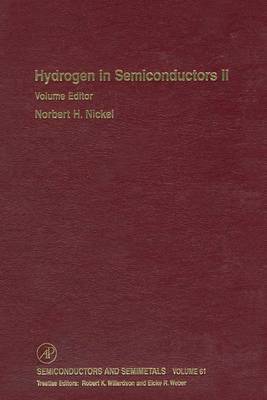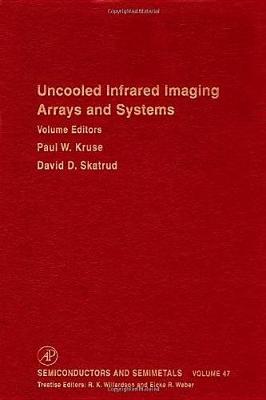Semiconductors and Semimetals
4 total works
Since its inception in 1966, the series of numbered volumes known as Semiconductors and Semimetals has distinguished itself through the careful selection of well-known authors, editors, and contributors. The "Willardson and Beer" Series, as it is widely known, has succeeded in publishing numerous landmark volumes and chapters. Not only did many of these volumes make an impact at the time of their publication, but they continue to be well-cited years after their original release. Recently, Professor Eicke R. Weber of the University of California at Berkeley joined as a co-editor of the series. Professor Weber, a well-known expert in the field of semiconductor materials, will further contribute to continuing the series' tradition of publishing timely, highly relevant, and long-impacting volumes. Some of the recent volumes, such as Hydrogen in Semiconductors, Imperfections in III/V Materials, Epitaxial Microstructures, High-Speed Heterostructure Devices, Oxygen in Silicon, and others promise that this tradition will be maintained and even expanded.
Reflecting the truly interdisciplinary nature of the field that the series covers, the volumes in Semiconductors and Semimetals have been and will continue to be of great interest to physicists, chemists, materials scientists, and device engineers in modern industry.
Reflecting the truly interdisciplinary nature of the field that the series covers, the volumes in Semiconductors and Semimetals have been and will continue to be of great interest to physicists, chemists, materials scientists, and device engineers in modern industry.
v. 47
This is the first book to describe an emerging but already growing technology of thermal imaging based on uncooled infrared imaging arrays and systems, which are the most exciting new developments in infrared technology today. This technology is of great importance to developers and users of thermal images for military and commercial applications. The chapters, prepared by world leaders in the technology, describe not only the mainstream efforts, but also exciting new approaches and fundamental limits applicable to all.
Volume 48in the Semiconductors and Semimetals series discusses the physics and chemistry of electronic materials, a subject of growing practical importance in the semiconductor devices industry. The contributors discuss the current state of knowledge and provide insight into future developments of this important field.


